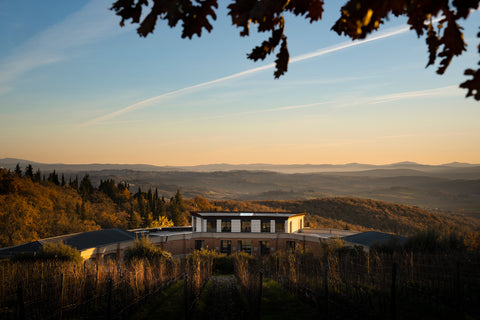Wine and architecture are two different realities that intertwine harmoniously. When we talk about wine we cannot ignore architecture, as it enhances the world of wine and its experiences. A perfect union between architecture and wine can be found in the author's Cellar of Fonterutoli Castle, a fascinating building, integrated with the surrounding landscape and functional at the same time.
Located between Castellina in Chianti and Siena, it represents a real avant-garde cellar, where design and modernity come to life without ever losing sight of the primary objective of functionality. A real link between the past and the future, which dominates the estate and the slopes of the countryside overlooking Siena from above and which reaches in depth with its three levels.

Such an ambitious project, aimed at reconciling the architectural form with production needs and safeguarding the environmental impact, could only be carried out by a member of the family. The merit therefore goes to Agnese Mazzei, one of the most prolific and avant-garde designers in Italy for the design of cellars and spaces for wine, to which she has dedicated herself since the beginning of her career. The value of its realization is demonstrated by the fact that the Fonterutoli Cellar is part of the Toscana Wine Architecture project, a circuit of 14 design cellars designed by the great masters of contemporary architecture.

Getting to the heart of the project, the Cellar of Castello di Fonterutoli is structured on three levels of depth, essential for not stressing the raw material. Through this system, in fact, the grapes harvested in the square can go down to the various stages of the vinification and maturation process thanks to the force of gravity alone. To safeguard the peculiarities of each terroir, micro-vinifications have been envisaged, which allow the grapes of each parcel to be processed separately. Finally, on the last level dedicated to the barrique cellar, during construction, five layers of water emerged which flow along the rock. These rock walls have been left exposed as they allow for constant humidity and temperature to be maintained throughout the year, without using external energy sources.
The Castello di Fonterutoli winery therefore represents an example of how art intertwines with the world of wine, giving life to the combination of aesthetic taste, functionality and sustainability.